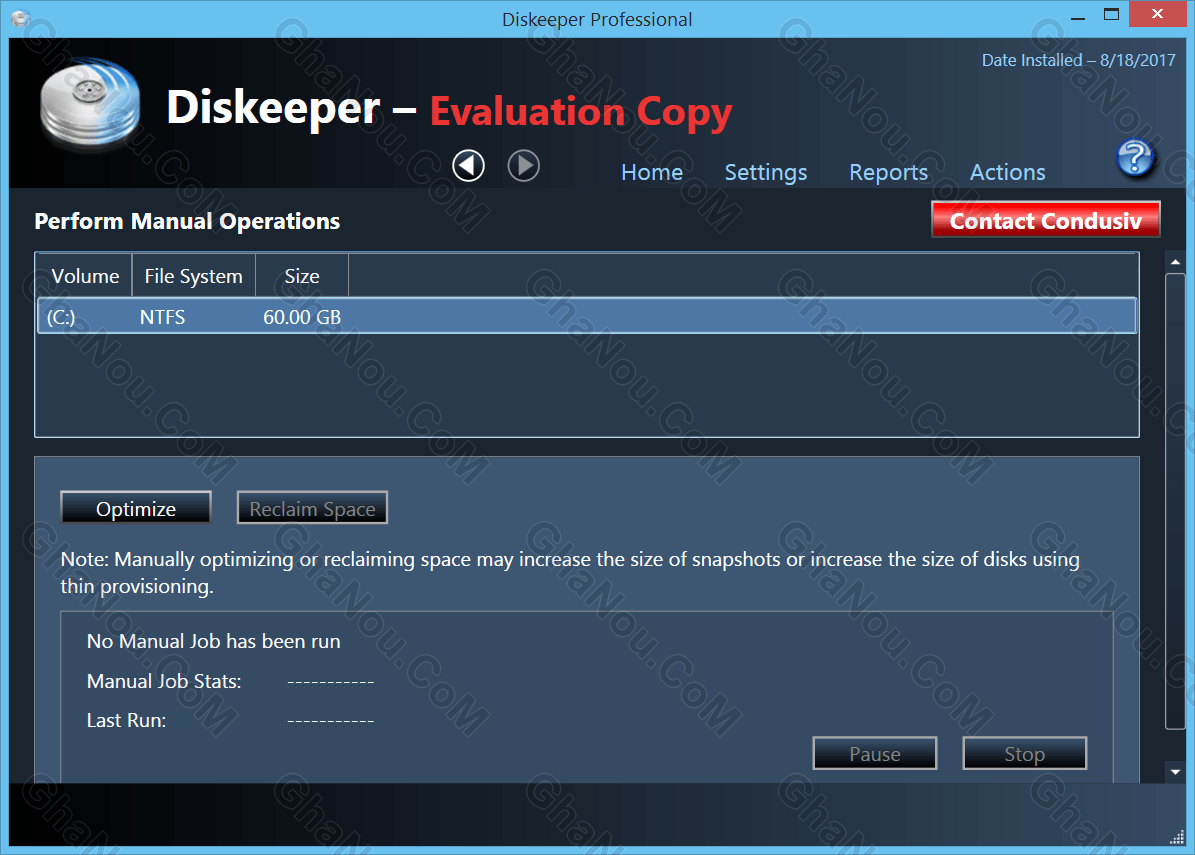
This lets Diskeeper automatically determine the optimum defragmentation schedule for your disk volumes, based on the number of files moved each time it runs on a disk volume. In this mode, you can specify times or days of the week for Diskeeper to run or not run.Īlternatively, you can set Diskeeper's "Smart Scheduling" feature. This lets the defragmenter run automatically in the background, either after hours or while you, applications, or system processes are active on the computer. You can also use Diskeeper's "Set It and Forget It" mode. That's the second major benefit of Diskeeper over built-in defraggers, which do not let other tasks run during defragmentation.

Or, I could continue working while Diskeeper worked in the background. However, I could manually set multiple disk volumes to defrag and then walk away from my computer to do other things. On my computer, simultaneous defragging multiple partitions seemed to slow the defragging of individual hard drives. Unlike the defragmenter with your operating system, you can then click another disk volume for Diskeeper to analyze and defragment while the first disk volume is being worked on.

At this point, click the "Defragment" button and let Diskeeper do its stuff.Īnd here's the first major benefit. If the display shows lots of red, you have a heavily fragmented disk volume. There's also a color graphic that shows the type and condition of the data on the selected disk volume.
#WINDOWS DISKKEEPER MANUAL#
In Diskeeper's manual mode, you click on a disk volume to highlight it, then click the "Analyze" button to determine the extent of fragmentation (the number of fragmented files and excess file fragments). So, again, defragging can take a long time if several disk volumes and drives are involved.ĭiskeeper handles both of these hard drive environments equally well. These people swear that having multiple partitions on multiple small drives is better than having all your "eggs in one basket." That may be true, but the defragmenters that come with the Windows operating system can defragment only one disk volume at a time. Other computer users "grow" their hard-drive space piecemeal, buying several 20-GB or so hard drives over time. Fine, but defragmenting large partitions (what Diskeeper calls "disk volume") and huge drives takes a long time. Some gearheads swear that having big, honking hard drives is the way to go.

Why? Consider these two approaches to hard-drive implementations. Those last two capabilities alone are worth the extra $50 for the single-workstation version.
#WINDOWS DISKKEEPER SOFTWARE#
Simply because the workstation version of Diskeeper 7.0 from Burbank, CA-based Executive Software International, Inc., is better it's faster, more efficient, and it makes defragging easier by letting you defragment multiple partitions and physical drives simultaneously, as well as to schedule the defragging to run in the background.
#WINDOWS DISKKEEPER FREE#
It isn't free like the one that comes with Windows but it's better.ĭisk defragmenting is a chore easily forgotten, and you already have a disk defragmenter built into your Windows operating system, so why buy a shrink-wrapped version of a disk defragmenter? When 'Free' can be expensive: Defragmentersĭiskeeper 7.0 is an automatic disk defragmenter for Windows. Evolving Enterprise - Software Review: When 'Free' can be expensive: Defragmenters


 0 kommentar(er)
0 kommentar(er)
